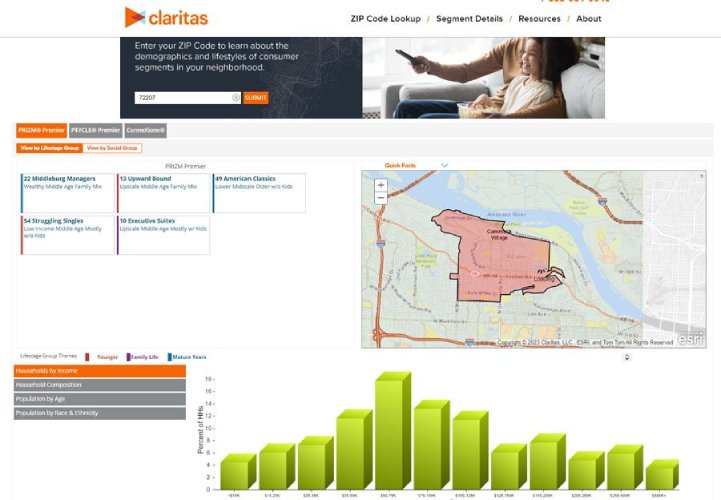
Creating a local marketing strategy is a critical step to helping your business grow and flourish. With an effective marketing plan, you’ll be able to identify and connect with potential customers, build a strong brand, and convert leads into sales. Download the marketing plan template below and use it as you walk through the steps of outlining your local marketing strategy.
Use our local marketing plan template to create your roadmap for building a strong brand presence. It’s completely customizable. To use and edit it in Google Workspace, save a copy of the local marketing plan template file to your drive. To use it with Microsoft 365 or other word processing programs, save it for Microsoft Word to your device or OneDrive.
FILE TO DOWNLOAD OR INTEGRATE
Local Marketing Plan Template
Send it to Me💡Quick Tip
Want expert help with local marketing? Get a free consultation from Straight North. They’ll explain the best marketing strategies to pursue and build a plan to grow your business to the next level.
Select Download TypeDefining the audience (aka target market) is a core part of any marketing strategy. It allows you to determine the size of your potential customer base and develop compelling messaging and marketing tactics to attract them. To define your audience, determine the geographical size of your service area, research the demographics, and create customer personas for your ideal customer types.
Outline the Boundaries of Your Local Service AreaSimply put, the local service area is the geographic region you plan on servicing. It may be as big as a few counties or as small as a couple of neighborhoods. Defining the local service area sets parameters you’ll use to help choose what advertising you’ll run, the message you’re putting out to potential customers, and even the prices you set for your products or services.
To set a local service area, you need to accurately and honestly assess how big a market your small business can support. If you’re running a landscaping business, your local service area may be reserved to a few key neighborhoods. But if you’re operating a retail boutique, perhaps your customers are coming from farther away. Setting the parameters of your service area means setting yourself up to succeed in servicing the customers you’ve chosen.
Research Local Market DemographicsAnother important component of defining your audience is exploring the demographics of your local service area. That means you’re asking a series of questions about the people who live and work within your defined geographic area. This means finding answers to questions about average household income, family sizes, homeownership rates, the age of individuals, and more.
Start your local market demographics research with a tool like Claritas. With just a ZIP code, you can find information about household income, household size, age, and more. For many small businesses, this will be enough information to create a picture of your ideal customer.

An example of free local marketing demographic research results with Claritas (Source: Claritas)
Some other potential sources of local demographic info include:
Regardless of the source of your local market demographics, once you’ve collected the information, you’ll have an understanding of the local customer base. This puts you in a better position to outline goals, decide which channels you’ll tap into, and build the rest of your local marketing plan.
Create Customer Personas & Describe Your Target AudienceFor your business to survive, the customer personas you create must be represented adequately within your selected service area and its demographics. It’s likely that you’ll end up with more than one ideal customer type, or customer persona. The aggregate of your personas can then be used to describe your target audience.
Use the table below as a template, or read our article explaining how to create customer personas, which includes a free downloadable version.
Characteristic Customer Persona Household Income Professions / Job Titles Pain Points Goals When Purchasing a Solution Messaging / Value PropositionEvery business needs a roadmap to grow and prosper. Take a moment to outline the goals for what you hope to accomplish with your local marketing strategy. For each goal, identify the key performance indicators (KPIs) that will indicate progress or success, and how you will measure them. Here are some examples of goals you might set as part of your local marketing plan.
In addition to specific, measurable goals, your goal statement should include who is responsible to track progress and how (and when) progress will be measured. This gives you the benchmarks to measure progress and evaluate what’s working (and what’s not). In addition, it enables you to hold yourself and your team accountable against objective data points.
A great way to determine whether your goals are specific, measurable, and achievable is to use a system. One popular system is to use SMART goals, and you can quickly learn how to use this system by reading our article showcasing 10 SMART goals and examples.
Getting to know your competition is an essential part of building your local marketing strategy. Researching competitors helps you understand the local market and also points to marketing gaps those businesses are leaving in their own marketing efforts. These gaps represent opportunities for you to connect with potential customers and grow your business.
To research the competition, make a list of direct and indirect competitors. Then, visit their websites and social media, sign up for their emails, and if they have physical locations, go check them out.
Make notes about the messaging and positioning they use with customers. Pay attention to local media and see where they are advertising. How do their advertising efforts convey their message? The goal is to find gaps in their message and marketing that you can step into.
Your message starts with a single question: How does your business solve a problem for your customer in ways competitors cannot? The answer to this question represents your unique selling proposition (USP).
Also known as the unique value proposition (UVP), this is a specific value, product, feature, or benefit your brand provides that isn’t available from local competitors. For example, your product may have unique features, or you are providing services competitors aren’t covering. It could also be that you are able to deliver a higher quality product or service, or provide it in a unique way that appeals to your ideal customer types.
The unique value proposition is a key differentiator between your business and the rest of the competition. It forms the core of your messaging to potential customers for your marketing materials, advertising, landing pages, and more. It should efficiently communicate what it is your business does, and how it benefits potential customers.
Connecting with customers based on your unique selling proposition is the start of a relationship you’ll eventually develop with them along their buying journey. With the right message, that connection begins to form before you ever speak to them. It starts through the marketing and advertising you’re putting out. To get inspiration for your marketing plan, check out these local marketing ideas.
Your unique selling proposition can become the core of your mission and vision statements. To see how other companies have made this work, check out our roundup article of inspiring vision statement examples.
The local marketing plan you develop will encompass three main factors: your local marketing ideas, the channels you decide to use, and the size of your marketing budget. Our article showcasing how to build a strong brand presence offers an expansive list of potential marketing and advertising channels to consider. But for the purposes of a local marketing strategy, we’ve outlined the key places to start below.
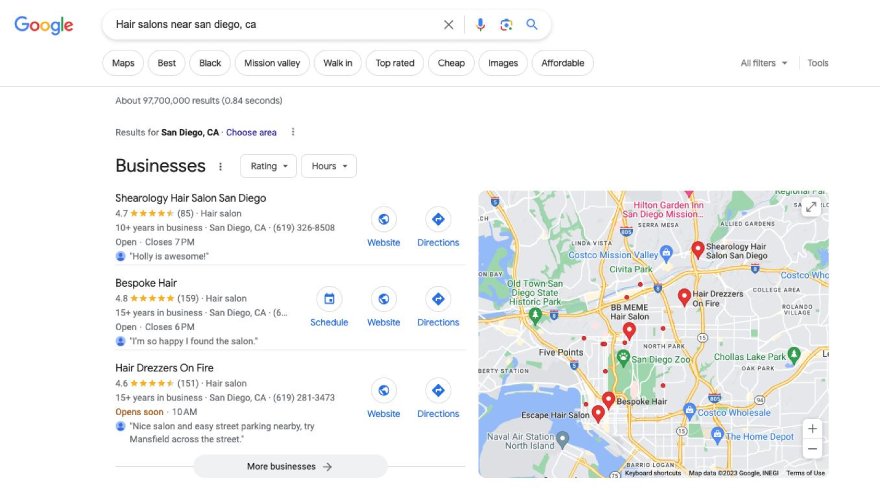
Google Business listings for hair salons in San Diego, CA (Source: Google Maps)
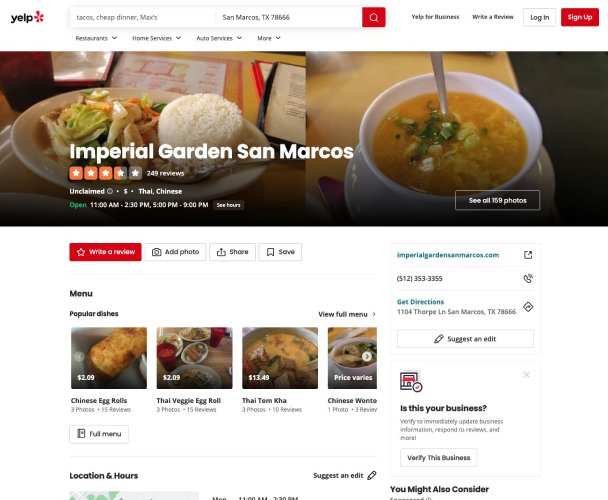
Yelp profile for a Chinese restaurant in San Marcos, TX (Source: Yelp)

Small business website for a boutique in Seattle, WA (Source: Glasswing)
Local marketing online doesn’t just mean putting up a website or a Google Business page, though both are important components of a local marketing plan. Here are some of the basic components of local online marketing:
Pro tip: A professional-looking website doesn’t have to cost you a king’s ransom. Thanks to all-in-one site builders like Wix, you can build an attractive website yourself for very little money and time. Learn more in our write-up about the best website builders for small businesses.
Increasingly, potential customers are going online before they choose a local business, and meeting them where they are looking is a vital part of your marketing strategy. You’ll want to plan for pay-per-click (PPC) advertising, such as:
Additionally, there are other ways of connecting online with customers, whether via their inbox, cell phones, or social media accounts, through:
As you can see, local online marketing casts a wide net of potential digital marketing channels you can employ. This can be overwhelming, so start with the basics and plan to build from there.
In need of more website traffic? Read our list of website marketing strategies for ideas on how to get more site visits from people in your target market.
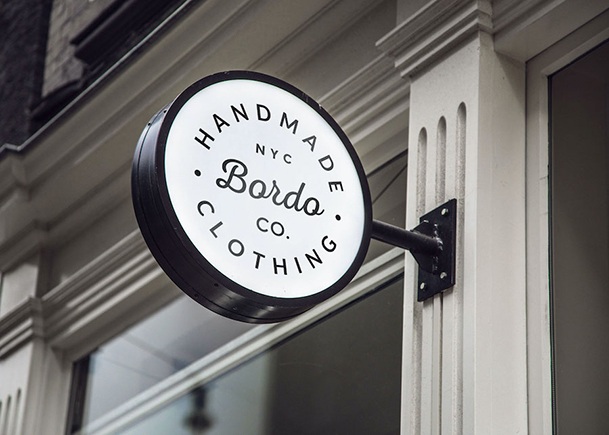
A sign for a clothing company showing what the business offers (Source: Resource Boy)

Example of a postcard coupon template from Canva (Source: Canva)
Offline marketing is a broad category of marketing that encompasses ways to get the word out about your business that don’t involve the internet. From your business’ signage to offline outreach campaigns, here are a few small business marketing ideas to get you started:
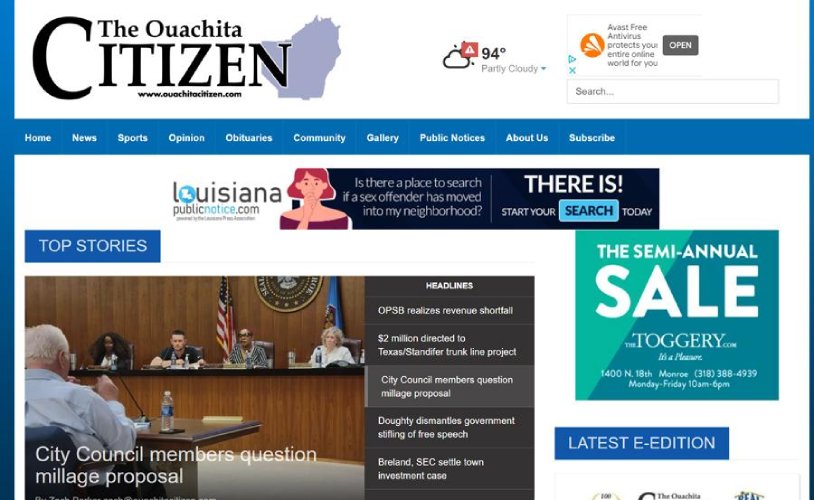
A newspaper ad for a local clothing store (Source: The Ouachita Citizen)
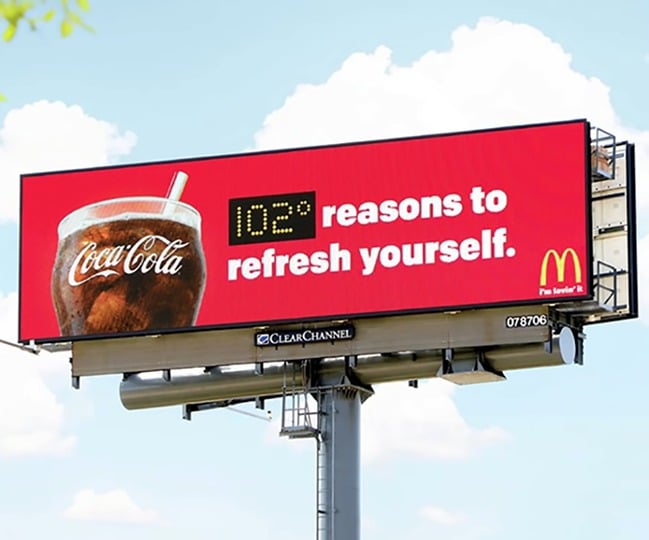
A digital billboard advertising McDonald’s (Source: ClearChannel)
Your local advertising options are extensive and can be expensive if you don’t plan carefully. Start by building a list of local paid advertising options and associated costs. Take your time. It’s easy to get overwhelmed by the choices you have in advertising, and to be fair, not all media types are right for every small business. These outlets can include:

Sponsoring a youth sports team builds community engagement. (Source: Pexels)
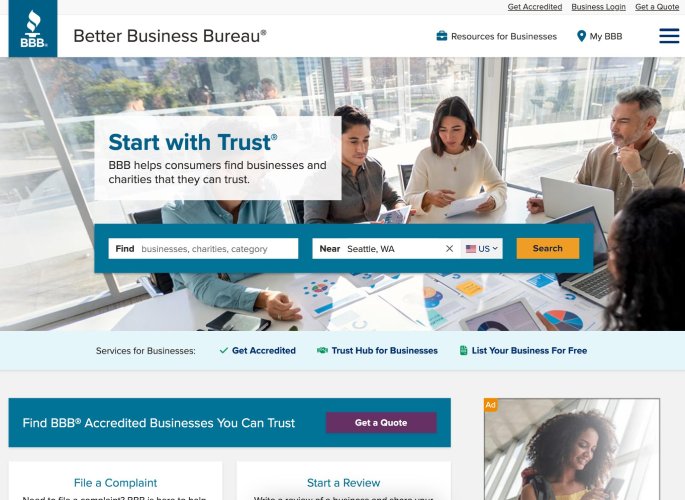
Joining the Better Business Bureau is a way of demonstrating trustworthiness.

Volunteering for organizations like Habitat for Humanity builds teamwork and brand clout. (Source: Habitat for Humanity Nashville)
The final component of local marketing is about brand reputation, including both public relations efforts and community investments. This means joining civic organizations, networking groups, or service clubs and sponsoring community activities. It also includes sending press releases when your business does something notable, such as introducing a new product or service, holding an event, or participating in said community events and sponsorships.
Here are a few examples of public and community relations that will build brand visibility and credibility for your company locally:
While each of these local marketing tactics are less direct than some other avenues, they are invaluable in garnering brand visibility and affinity, which are vital for word-of-mouth marketing. What’s more, they demonstrate your company’s reinvestment back into the community in a way that says your business is here to stay.
Pro tip: Joining professional organizations like the Chamber of Commerce and BBB can mean big gains. The close rate for leads obtained through organizations like these is 40%. Find out more about the power of business networking.
By now, you’re probably asking yourself how much all this will cost, and next, how much you need to budget for marketing. According to Deloitte, most companies spend an average of 10.9% of gross revenue on marketing. As such, a business with revenue of $100,000 for the year would reinvest $10,900 back into marketing and advertising during the same period.
To make things easy, set your initial marketing budget at 10% of gross revenue (the money your business makes before taxes or expenses are deducted). Your budget calculation would then look like this:
Average monthly gross revenue: $__________ x 0.10 = $_____________
Note: If this is your first time allocating money toward marketing, 10% might feel like a lot. If you need to start smaller, do. Then as your marketing investments begin to pay off, increase the marketing budget by focusing on the tactics producing the best return on investment (ROI).
The good news here to keep in mind (and something small business owners don’t always realize) is that marketing is one of the few operational expenses that can yield exponentially more revenue than it costs. So make sure that you track not only how much you’re spending on each tactic, but also track metrics like new leads, customers, and revenue generated.
Once your overall budget is set, you can allocate it based on the marketing calendar in the next step. This will include the cost of tactics like advertising, but should also include costs for software (e.g., website, email marketing, search engine optimization (SEO), and so on) as well as costs for artwork, ad copy, outsourced services, and more.
You can maximize your advertising and marketing budget by enlisting the help of a marketing agency. Choosing the right marketing agency can cut down on the time and waste of learning how to market your business.
Armed with your marketing budget and the channels you want to use for local marketing, it’s time to lay out your plan on a calendar. Map out the coming 12 months of your business year. Include planned promotions, events, launches, holidays, and so on, and the tactics you plan to use (e.g., email, social media, ads, etc.)
To help you out, we created a sample marketing calendar in Google Sheets. You can use this by saving it as a copy in Google Workspace or downloading it for Microsoft Excel.
FILE TO DOWNLOAD OR INTEGRATE
Local Marketing Calendar Template